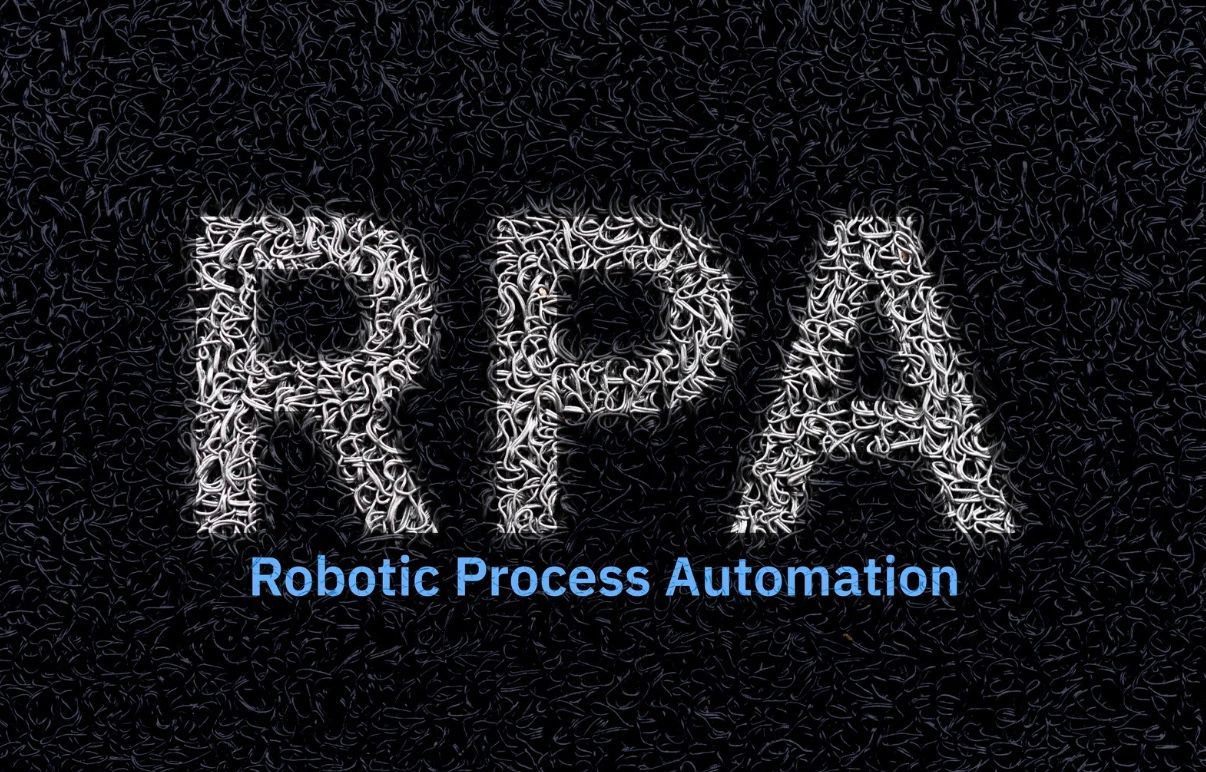What RPA Means for Businesses: Key Benefits Explained
What RPA Means for Businesses: Key Benefits Explained

Key Highlights
● Robotic Process Automation (RPA) uses software bots to automate high-volume, repetitive digital tasks, boosting business efficiency.
● Key benefits of RPA include significant cost savings, enhanced accuracy by eliminating human error, and increased overall productivity.
● This automation technology empowers your human workers by freeing them from monotonous jobs to focus on more strategic and creative work.
● RPA bots can integrate with your existing systems without requiring major infrastructure changes, which simplifies business process automation.
● Process automation with RPA helps strengthen security and ensures consistent compliance with important regulatory standards.
● RPA is a core technology for enabling enterprise automation and digital transformation efforts.
Introduction
Are you looking for ways to make your business more efficient and competitive? Robotic Process Automation (RPA) might be the answer. This powerful technology is changing how companies operate by automating routine tasks, which frees up your employees for more important work. As a key driver of digital transformation, business process automation with RPA helps you streamline operations, reduce costs, and improve accuracy. Let's explore what RPA means for your business and the significant benefits it can bring.
How RPA is Revolutionizing Workflow in Organizations
Understanding Robotic Process Automation (RPA) in Business
In the context of business automation, Robotic Process Automation is a software technology designed to automate digital tasks quickly and reliably. Think of it as a digital workforce of RPA bots that can handle the repetitive, rule-based jobs your employees might be doing manually. This automation technology is a cornerstone for enabling enterprise-wide automation.
By integrating into your business operations, RPA works alongside your team to execute processes with greater speed and accuracy. Let's look closer at what RPA is and how it functions within an organization.
Definition and Core Concepts of RPA
At its heart, Robotic Process Automation is a software technology that uses "software robots" or "bots" to mimic human actions and automate digital tasks. It is a method of business process automation that is specifically designed to handle high-volume, repetitive work like data extraction, filling out forms, and transferring files.
One of the most appealing aspects of RPA is its simplicity. You don't need advanced coding skills to configure RPA-driven workflows. If you can record a video on your phone, you can set up basic automations. This user-friendly approach makes automation solutions more accessible across your entire organization.
It's important to understand that RPA on its own is not artificial intelligence (AI). It is a process-driven technology that follows predefined instructions. However, enterprise RPA deployments often use AI to expand automation capabilities, tackle more complex use cases, and accelerate process discovery.
How RPA Works in Organizational Processes
So, how does Robotic Process Automation actually work? RPA bots operate by interacting with the user interfaces of your applications, just like a human would. They can also connect to APIs to integrate and execute tasks across various systems, including legacy enterprise software. This allows them to perform a wide range of digital tasks without needing changes to your underlying IT infrastructure.
These bots are perfect for handling routine tasks that are part of a larger business process. This includes things like copying and pasting data, making calculations, or moving files between folders. By automating these steps, you reduce the need for human intervention in predictable, rule-based activities.
RPA can be deployed in a few different ways. Attended bots work alongside your employees to assist with specific tasks, while unattended bots operate independently in the background on pre-programmed schedules. Hybrid RPA combines both, allowing bots and human workers to collaborate on complex processes, blending automated efficiency with human decision-making.
RPA Versus Traditional Automation Technologies
You might wonder how RPA technology differs from the automation tools businesses have used for years. While traditional automation has its place, it often requires significant IT development, deep system integrations, and complex coding. This can make it slow and expensive to implement.
Robotic Process Automation offers a more flexible and accessible approach to process automation. By working at the user interface level, RPA technology can be deployed faster and with less disruption to your existing systems. The following sections will explore the key differences and the unique advantages RPA brings to modern enterprises.
Main Differences Between RPA and Conventional Automation
The primary distinction between Robotic Process Automation and conventional automation lies in how they interact with your systems. Traditional automation often requires complex API development or direct integration into application codebases, which can be time-consuming and resource-intensive.
RPA, on the other hand, is designed to be less invasive. It mimics human actions on the user interface, meaning it can automate tasks without altering the underlying software. This makes it a much more agile automation technology for a dynamic business process. Here are some of the main differences:
● Integration: RPA operates on the presentation layer (UI), while traditional automation usually requires backend integration.
● Flexibility: RPA is easier to configure for automating manual tasks and can adapt quickly to process changes.
● Implementation Speed: RPA projects can often be launched in weeks, compared to months or years for traditional automation.
● Accessibility: Low-code/no-code RPA platforms empower non-technical users to build automations.
Advantages of RPA for Modern Enterprises
The unique approach of RPA offers several advantages for modern businesses seeking to improve operational efficiency. Because RPA tools are application-agnostic, they can seamlessly connect different software and systems, breaking down technology silos that often hinder productivity. This ability to work across environments delivers enterprise-wide efficiencies.
One of the most significant benefits of RPA is the ability to achieve business automation at scale quickly and inexpensively. Since it doesn't require you to overhaul your existing systems, RPA provides a faster path to ROI and lower operating costs. You can start small and expand your automation efforts as you grow.
Ultimately, RPA helps drive your digital transformation forward. It not only delivers immediate productivity gains but also frees up your employees' time. This allows your team to shift its focus from repetitive tasks to strategic, higher-value activities that require human creativity and problem-solving skills.
Key Benefits of Adopting RPA for Businesses
Adopting RPA brings a host of measurable benefits that can have a snowball effect on your business operations. From the moment you implement automation solutions, you can expect to see tangible results like cost savings and greater accuracy in completing business tasks.
These initial wins pave the way for broader transformation, boosting productivity and enabling your organization to become more agile and resilient. Let's examine some of the key benefits of RPA in more detail, starting with efficiency and productivity gains.
Increased Efficiency and Productivity
One of the most immediate benefits of process automation is a dramatic increase in efficiency. Software robots can work 24/7 without breaks or fatigue, completing tasks much faster than human workers. A process that takes a person hours can often be finished in just a few minutes by a bot.
This speed directly translates to higher productivity across your organization. By automating routine tasks, you can achieve more with the same resources. Here’s how RPA drives efficiency:
● It handles high-volume tasks with incredible speed, cutting down processing times.
● It allows your workforce to focus on strategic work instead of repetitive activities.
● It scales easily to handle sudden workload increases without compromising performance.
This boost in productivity isn't just about doing things faster. It's about empowering your employees to contribute in more meaningful ways. When monotonous tasks are handled by bots, your team is free to focus on problem-solving, innovation, and building customer relationships.
Enhanced Accuracy and Error Reduction
Everyone makes mistakes, and the risk of human error is especially high during long hours of monotonous, repetitive work. These small errors can lead to costly rework, compliance issues, and poor customer experiences. This is where automation technology provides a powerful advantage.
RPA bots are programmed to follow instructions perfectly every time. As long as the rules are defined correctly, you will get uniform, predictable, and error-free results. This consistency is a game-changer for process automation, leading to a significant reduction in errors across the board.
By minimizing human error, you improve the quality and reliability of your business processes. Enhanced accuracy means fewer mistakes to fix, stronger compliance with regulations, and a better overall standard of work. RPA bots deliver a level of precision that is nearly impossible to achieve with manual processing alone.
Additional Value of RPA Implementation
Beyond improving efficiency and accuracy, RPA implementation delivers additional value that strengthens your entire organization. The benefits extend to your bottom line through significant cost savings and better resource optimization. You can achieve more with your existing resources by automating the right tasks.
Moreover, RPA plays a crucial role in enhancing compliance and mitigating risks associated with manual processing. By standardizing how a business process is executed, automation provides greater control and transparency. Let’s explore these valuable benefits further.
Cost Savings and Resource Optimization
Implementing business automation with RPA leads to measurable cost savings. Software robots are more productive and less expensive than the equivalent human workforce needed to achieve the same results. When a bot performs a task, it is completed faster and more accurately, directly contributing to lower operational costs.
This technology also excels at resource optimization. By automating manual processes, you liberate your employees from tedious work. These team members can then dedicate their time to more challenging and strategic activities that drive business growth, such as innovation, customer engagement, and complex problem-solving.
This shift not only improves employee satisfaction but also ensures that your most valuable asset—your people—is focused on work that truly matters. The combination of reduced costs and optimized human resources makes RPA a powerful tool for improving your financial performance.
Improved Compliance and Risk Mitigation
Meeting strict regulatory requirements is a major challenge for many industries. Manual processes can be inconsistent and difficult to track, increasing the risk of non-compliance. RPA automation solutions address this by performing tasks exactly as prescribed every time.
RPA strengthens your compliance framework and aids in risk mitigation. Bots provide a clear and detailed audit trail of every action they take, making it easy to demonstrate adherence to regulations. This is especially valuable in sectors like finance and healthcare. Here's how RPA improves compliance:
● It executes tasks according to strict standards without any deviation.
● It generates a complete audit trail for full transparency and accountability.
● It reduces the risk of data breaches caused by human error.
● It guarantees that regulatory requirements are consistently met.
By automating compliance-related tasks, you can protect your organization from penalties and reputational damage while ensuring your sensitive data remains secure.
Practical Applications of RPA in Real-World Organizations
The theoretical benefits of RPA are impressive, but its true power is revealed through its practical applications. Across nearly every industry, companies are launching RPA projects to transform their business operations. These real-world use cases demonstrate how process automation delivers dramatic time and cost savings.
From handling data entry to managing customer service inquiries, RPA is already a game-changer for many organizations. Let's look at some common tasks that are being automated and review notable case studies that highlight RPA's impact.
Examples of Common Tasks Automated by RPA
What kinds of tasks are best suited for RPA solutions? Generally, RPA excels at automating manual tasks that are rule-based, repetitive, and involve structured data. If a process requires a person to follow a clear set of steps on a computer, it's likely a great candidate for automation.
Here are some common examples of tasks that businesses are automating with RPA:
● Data Entry: Moving files, capturing information from forms, and keying data into various systems without errors.
● Report Generation: Automatically gathering data from multiple sources to create standardized daily, weekly, or monthly reports.
● Order Processing: Managing purchase orders, creating invoices, and tracking shipments to improve fulfillment times.
● Customer Support: Using chatbots to handle routine customer queries or automatically logging and routing support tickets.
By automating these fundamental tasks, companies free up their employees to focus on more complex, value-added work that requires human judgment and interaction.
Notable Case Studies Across Different Sectors
The industry impact of RPA solutions is clear when you look at the results companies have achieved. Organizations across various sectors are leveraging business automation to streamline a chosen business process and generate a significant return on investment.
These case studies show how RPA can produce remarkable outcomes, turning lengthy manual processes into highly efficient automated workflows. The following table highlights a few powerful examples:
| Industry | RPA Application | Impact |
|---|---|---|
| Financial Services | Mortgage quality checks | Completed nine years of work in just two weeks. |
| Healthcare | Administrative tasks | Saved a UK hospital network 7,000 hours per year. |
| Manufacturing | Invoice processing | Enabled 80% straight-through invoice processing. |
As these examples illustrate, the right RPA solution can fundamentally change how work gets done. It drives efficiency, reduces costs, and allows organizations to scale their operations in ways that were previously impossible without massive investments in new infrastructure or personnel.
Industry Impact: Where RPA Is Transforming Operations
The impact of RPA extends across numerous industries, making it a key component of modern digital transformation initiatives. As part of a comprehensive automation strategy, RPA is reshaping business process management by improving speed, accuracy, and compliance in core operations.
From finance to healthcare, this technology is helping organizations overcome long-standing productivity barriers and gain a competitive edge. Let's explore how RPA is making a difference in a few specific sectors.
Financial Services and Banking
The financial services and banking sectors are ideal candidates for RPA, given their heavy reliance on rule-based processes and the critical need for security and compliance. This automation technology helps financial institutions streamline operations while meeting stringent regulatory demands.
Common use cases include automating customer onboarding, where RPA can collect and verify information to reduce processing times. It is also used for loan processing, handling data entry and document checks to support faster and more accurate credit assessments. In addition, RPA helps with regulatory reporting by gathering and processing data, which reduces the risk of human error.
By implementing RPA, banks and financial firms can achieve significant efficiency gains, reduce operational risks, and enhance the overall customer experience. This digital transformation allows them to become more agile and responsive in a competitive market.
Healthcare, Insurance, and Retail
In healthcare, RPA is injecting new efficiency into administrative processes, reducing the burden on staff and allowing them to focus on patient care. An automation platform can automate patient scheduling, claims processing, and the management of electronic health records (EHRs), leading to better outcomes and lower costs.
The insurance and retail industries also see major benefits. Insurers use intelligent process automation for claims verification, policy administration, and compliance reporting. In retail, RPA helps with inventory management, order processing, and supply chain optimization. It also powers chatbots and virtual assistants to improve customer satisfaction.
Across these sectors, RPA solutions are driving operational excellence. By automating repetitive tasks, companies in healthcare, insurance, and retail can reduce costs, improve accuracy, and deliver a better experience for both employees and customers.
Getting Started with RPA in Your Business
Ready to begin your RPA implementation journey? Getting started doesn't have to be complicated. The first step is to develop a clear automation strategy that aligns with your business needs. This involves identifying which processes are ripe for automation through careful process discovery.
A well-planned approach will help you achieve early wins and build momentum for a larger, enterprise-wide program. The following sections will guide you through the essential steps for launching your RPA initiatives and choosing the right technology partner.
Essential Steps to Launch RPA Initiatives
Launching successful RPA projects requires a thoughtful, strategic approach. Instead of jumping into automation haphazardly, it's crucial to build a solid foundation for your automation program. Following a few best practices will help you scale effectively and maximize your return on investment.
Here are some essential steps to get you started on the right track:
● Engage Stakeholders: Gain buy-in from leaders and employees across the organization and identify champions who can help drive change.
● Establish a Center of Excellence (CoE): Create a central team to set standards, ensure governance, and share best practices for RPA development.
● Start with Process Discovery: Use tools like process mining to identify and document existing workflows and pinpoint the best automation opportunities.
● Measure Effectiveness: Define key performance indicators (KPIs) to track bot performance, ROI, and the overall impact of your RPA projects.
By following these steps, you can create a robust framework that supports a successful and scalable automation journey, ensuring your digital transformation efforts deliver real value.
Choosing the Right RPA Software Provider
Selecting the right RPA software is a critical decision that will impact the success of your automation initiatives. The ideal provider should be a strategic partner that aligns with your long-term business needs and goals. Look for an automation platform that is not only technically robust but also user-friendly for all employees.
When evaluating software tools, consider factors like accessibility, flexibility, and security. A platform with low-code or no-code options will empower both technical and non-technical users to create automations. It's also important that the solution can integrate seamlessly with your existing systems and scale as your needs grow.
The market includes various types of providers, from large enterprise solutions like Automation Anywhere and UiPath to more specialized tools. Evaluate vendors based on their innovation, support, and pricing models to find the best fit for your organization's unique requirements.
Challenges and Considerations in RPA Adoption
While the benefits of RPA are clear, the path to adoption is not without its challenges. Organizations often face hurdles related to identifying suitable processes, managing digital systems, and ensuring proper governance. Being aware of these potential obstacles is the first step toward overcoming them.
By proactively addressing these considerations and applying best practices, you can navigate the complexities of RPA adoption and ensure your implementation is successful. Let’s look at some common hurdles and how to address them.
Common Hurdles and Best Practices
Many of the challenges associated with RPA projects can be mitigated with careful planning and a commitment to best practices. From process discovery to change management, a proactive approach will help you avoid common pitfalls in your digital transformation efforts.
Here are some common hurdles and how to overcome them:
● Difficulty in Process Discovery: Many organizations struggle to map existing processes accurately. Use AI-powered process mining tools to get a clear view of your workflows and identify the best automation opportunities.
● Lack of Governance: Inconsistent practices can undercut your ability to scale. Establish a Center of Excellence (CoE) early on to create standards and ensure compliance.
● Maintaining Automations: Automations can fail if underlying application interfaces change. Choose RPA platforms with generative AI tools that enable self-healing bots to reduce maintenance.
● Employee Resistance: Fear of job loss can cause pushback. Communicate the benefits of RPA clearly and involve employees in the automation journey.
Addressing these challenges head-on will pave the way for a smoother, more successful automation program.
Conclusion
In summary, Robotic Process Automation (RPA) offers significant advantages for businesses looking to enhance their operational efficiency and accuracy. By automating routine tasks, organizations can not only reduce costs but also free up valuable resources for more strategic activities. As industries across the globe adopt RPA, businesses can leverage its capabilities to improve compliance and mitigate risks effectively. The journey to implementing RPA may present challenges, but with the right approach and tools, the benefits far outweigh the hurdles. If you're ready to transform your business processes and explore how RPA can work for you, get in touch today for a free consultation!
Frequently Asked Questions
What makes RPA different from AI and machine learning?
Robotic Process Automation is a process automation technology using RPA bots to follow predefined rules for repetitive tasks. In contrast, artificial intelligence and machine learning involve cognitive abilities, allowing systems to learn from data and make decisions. RPA executes tasks based on instructions, while AI provides the "thinking" power.
Which business processes benefit most from RPA?
The best business process candidates for business automation are rule-based, high-volume, and involve repetitive tasks. Functions like data entry, invoice processing, and report generation are ideal, as RPA can eliminate human error and dramatically increase speed, freeing up employees to handle more complex work that requires their expertise.
What are the leading RPA software platforms in the United States?
The RPA software market features several major providers. Enterprise-level automation platform vendors like Automation Anywhere and UiPath are widely recognized as leaders for their scalable and comprehensive software tools. Other RPA tools focus on specific ecosystems or workflows, so the best choice depends entirely on your unique business needs.



